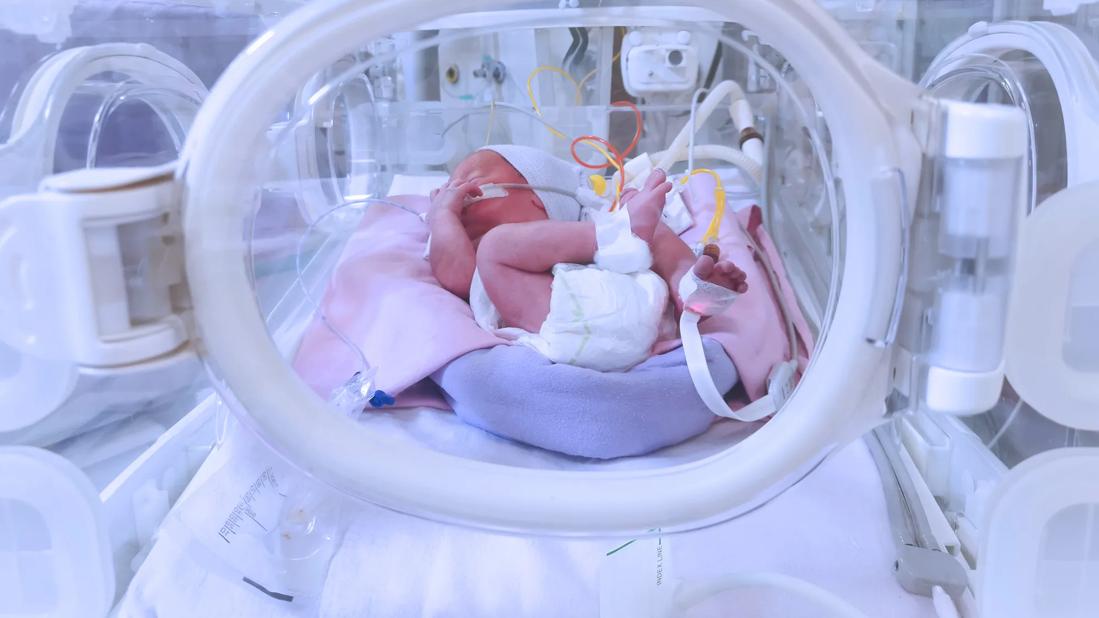The Chair of Neonatology discusses findings from large epidemiological study

Researchers at Cleveland Clinic reported that tracheostomies in extremely low birth weight (ELBW) infants (< 1,000 g) are associated with increased mortality and a longer length of stay in survivors, while placement of tracheostomy and a gastrostomy tube (G-tube) is associated with better outcomes and decreased mortality. Although epidemiological studies do not provide cause-and-effect relationships, the findings, they say, could help guide future clinical decision making.
Advertisement
Cleveland Clinic is a non-profit academic medical center. Advertising on our site helps support our mission. We do not endorse non-Cleveland Clinic products or services. Policy
They published these data in Pediatric Pulmonology.
Advancements in neonatal care in the United States have led to improved survival of infants at the edge of viability with birth weight < 750 g and a gestational age range from 22 to 25 weeks. However, these infants are at risk for severe complications, which may warrant interventions such as tracheostomy and/or G-tube placement for chronic respiratory support and nutritional management, respectively.
The problem, explains Hany Aly, MD, a coinvestigator of the study and Chair of the Department of Neonatology at Cleveland Clinic Children’s, is that there is limited information and consensus about outcomes associated with tracheostomy and G-tube placement in ELBW neonates as these cases are relatively rare, particularly at any single institution.
The team leveraged data from the National Inpatient Sample (NIS), one of the largest inpatient datasets in the U.S., and identified 620,061 ELBW infants over a 25-year period (1993 to 2018). They excluded infants with specific congenital conditions and abnormalities and those transferred out of the facility, resulting in a final cohort of 221,339 ELBW neonates. Of these, 1,788 (0.8%) received tracheostomy only, 4,867 (2.2%) received G-tube only, and 1,026 (0.46%) had both placed.
The analysis revealed that mortality was highest in ELBW neonates receiving tracheostomy alone (26.9%), lowest in those with only a G-tube (5.5%), and 17.8% in those who had both interventions. Despite prolonged hospitalization in the cohort receiving both interventions, survival was still higher.
Advertisement
The authors also note that tracheostomy and G-tube placements were more frequently placed in Black and African American babies compared to White babies and those of other races, with males more likely than females to receive any of the interventions.
G-tube placement and the dual intervention, G-tube and tracheostomy placement together, have both increased over the last 25 years, the authors report. Dr. Aly notes that increased use of G-tube may be explained by advancements in neonatal care and, subsequently, improved survival along with more potential comorbidities that warrant nutritional support.
Alongside this, tracheostomy placement alone has significantly decreased, which may suggest a lower incidence of severe lung disease in ELBW infants with greater utilization of noninvasive respiratory support.
These findings show that the dual intervention may result in a better outcome in ELBW neonates with chronic lung disease. “It is biologically plausible that having a G-tube could help improve outcomes in this patient population,” says Dr. Aly. Although, the study is associative and not causative and, thus, should be interpreted carefully.
He is hopeful that these findings will support clinical decision making at the individual level. “When an infant is going to the operating room for tracheostomy placement, we might consider an evaluation of nutrition status and potential benefit from G-tube placement at this time, especially if there are concerns about growth or inadequate caloric intake,” Dr. Aly remarks.
Advertisement
Future prospective studies will allow researchers to tease out causative factors linking tracheostomy and G-tube placement with survival outcomes and help establish evidence-based guidelines for managing this challenging patient population.

Advertisement
Advertisement

Integrated care model reduces length of stay, improves outpatient pain management

A closer look at the impact on procedures and patient outcomes

Experts advise thorough assessment of right ventricle and reinforcement of tricuspid valve

Study also finds that 26% of children with cancer have mutations in DNA repair genes

A closer look at current uses and future opportunities

Experts are challenging the one-size-fits-all paradigm

Quality improvement project addresses unplanned extubation

Cardiac imaging substudy is the latest paper originating from the VANISH trial